AREA SETUP
Print various posters related to your theme and use them to decorate your daycare. (Open thematic poster-Social skills)
Stickers for rewards
(Open stickers-Social skills) Print the illustrations on adhesive paper and use them to create stickers that can be given to children to reward them for good behavior.
Educa-theme-Social skills
(Open educa-theme-Social skills) Print and laminate the elements representing your theme. Use them to present your theme to children (and their parents) while decorating your daycare.
Educa-decorate-Social skills
(Open educa-decorate-Social skills) Print, laminate, and cut out the items. Use them to decorate the walls of your daycare and set the mood for your theme.
Social skills mural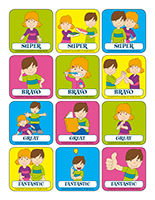
Cut several different facial features (eyes, mouths, noses, etc.) out of magazines and ask children to mix and match them to create new faces. Write the name of a social skill under each face. Throughout the week, add pictures of the children in your group as well as drawings that represent different social skills to your mural.
Here are a few ideas to integrate social skills throughout your daycare:
- Stickers.
- Cut the letters required to write "SOCIAL SKILLS" out of colourful paper and stick them on paper plates. Use ribbon to hang the letters and create a banner.
- Hang pictures of faces representing various emotions over your circle time area to identify the spots where children are to sit.
CIRCLE TIME
Social skills wheel
(Open social skills wheel) Print, laminate, and cut out the parts. Make a tiny hole in the centre of the wheel and use a fastener to insert both arrows. You can glue the wheel on a paper plate to make it stronger. Use the social skills wheel to spark a conversation with your group. Name a child to spin the wheel. Ask children questions about each social skill and help them identify and understand them.
Mood metre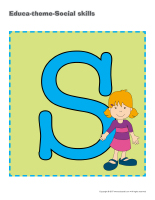
(Open mood metre) Print and laminate. Use a fastener to attach the arrow and encourage children to use the mood metre to indicate how they are feeling.
SPECIAL TOOL
This tool was created in response to a special request received. (Open my social skills chart) Print and laminate for each child. Use the chart daily to help children identify social skills.
PICTURE GAME
The picture game may be used as a memory game or to spark a conversation with the group. The pictures may also be used simply to decorate the daycare or a specific thematic corner. (Open picture game-Social skills) Print and laminate. Store the game in a "Ziploc" bag or in your thematic bin.
Memory game-Social skills
(Open picture game-Social skills) Print the series of illustrations twice and use them for a traditional memory game.
VARIOUS WORKSHOPS-Social skills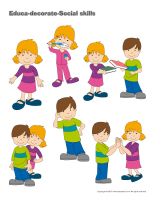
Have fun with these wonderful workshop ideas.
Construction/building blocks:
- Add several different figurines. Children will enjoy adding them to their constructions and using them to act out a variety of different situations involving emotions and social skills.
- Take pictures of children with their various constructions. Display the pictures within your daycare.
Arts & crafts:
- Have children draw things they like and dislike.
- Encourage children to draw a face that represents a specific emotion.
- Red, pink, and white paper children can use to cut several hearts. Help them write messages for their parents on the hearts.
Role play:
- Costumes represent a great way to encourage children to pretend they are someone else and therefore act out different situations. This activity can help them understand feelings associated with these situations.
- Puppets and a theatre. Prepare a puppet show packed with different emotions.
Manipulation: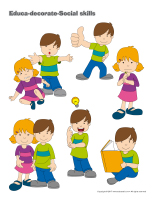
- Memory game about social skills with educatall.com picture game.
- Board game, lotto game, or other type of game that will help you explore social skills and emotions.
- Puzzles related to the theme.
- Different types of fabric children will enjoy manipulating. Invite them to tell you which ones they like and which ones they dislike. You can even provide sandpaper.
- Small unbreakable mirrors children can use to mime different emotions while looking at their reflection.
- Anti-stress balls.
Drawing:
- Coloring pages related to the theme.
- Creative coloring.
Pre-reading:
- Books that will help you explore emotions, social skills, and feelings with your group.
- A picture book with pictures of people expressing different emotions or demonstrating various social skills.
- Stories about social skills.
- Stuffed animals and blankets to create a cozy feeling and help children feel calm and safe.
Pre-writing: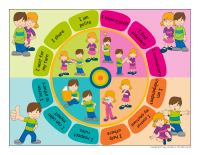
- Activity sheets for exploring social skills.
- Mazes.
- Connect-the-dots activities.
Sensory bins:
- Various substances children can manipulate (sand, dirt, pasta, water, etc.). They represent a great way to help channel children's energy and feelings. They should be available on a regular basis.
LANGUAGE ACTIVITIES
Word Flashcards
The flashcards may be used during circle time to spark a conversation with the group or in your reading and writing area. They may also be used to identify your thematic bins. (Open word flashcards-Social skills) (Open giant word flashcards-Social skills) I am polite, I share, I wait for my turn, I listen to others, I can calm myself, I respect rules, I help others, I control my emotions, I am independent, I communicate, I find solutions, I know myself
Let's chat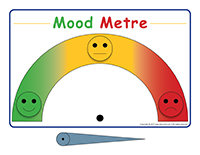
(Open word flashcards-Social skills) (Open giant word flashcards-Social skills) Print and laminate the word flashcards. Have each child pick a flashcard and take turns presenting it to the group. Discuss each social skill to see what children know about the theme.
ACTIVITIES FOR LEARNING ABOUT POLITENESS
Store play
Use plastic food items or toys to play store with the children in your group. Play the role of the salesperson while children pretend to be customers. Ask each child what they would like to buy and use the words "please" and "thank you" as often as possible. Let children take turns playing the role of the salesperson too.
Please and thank you
(Open game-politeness) Divide your group into two teams. You will have the "Please" team and the "Thank you" team. Deposit the words "please" and "thank you" along with a few other words in a bag. Pick one word at a time out of the bag and read it out loud. When the "Please" team hears you say "please", the children who are part of this team must quickly stand up and sit back down. When the "Thank you" team hears you say "thank you", the children who are part of this team must quickly stand up and sit back down. Whenever you read any other word, children from both teams must simply remain seated.
Polite words chart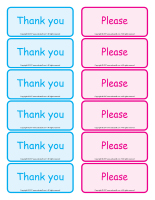
(Open polite words) Print and laminate. Deposit the words in a box. Children take turns picking a polite word out of the box. Read the words for your group and let children stick them on your polite word chart with adhesive putty.
The polite word jar
(Open polite words) Print and laminate. Use a clear jar. Every time you hear a child use a polite word, drop a cotton ball in the jar. When the jar is full, enjoy a special activity with your group to reward them for using polite words. This represents a great way to encourage children to speak politely among themselves.
ACTIVITIES FOR LEARNING TO SHARE
I can share blocks
For this activity, divide your group into teams. Give each team the same number of blocks and encourage them to share the blocks with their team members and build a structure together.
I am sharing with my secret friend
At the beginning of the week, during circle time for example, have each child pick the name of one of his daycare friends out of a jar (use pictures if children can't read). Children must a be especially kind to their secret friend throughout the theme, without revealing his name. At the end of the theme, have children guess who their secret friend was.
Sharing balls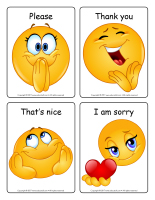
Encourage children to work together to make balls fall through the hole in the centre of your parachute.
Sharing waves
Have children hold the edge of your parachute and work together to move it up and down, creating waves.
Let's share this game
Ask children to hold your parachute with one hand and hold out their other hand for balance. Run around in circles in one direction, then change hands and run in the opposite direction. If you wish, use music to signal when it's time to change direction. Children can, for example, change direction every time the music stops.
A shared craft
Organize an arts & crafts activity where children must share. The actual project is unimportant, but be sure to provide only one glue stick, a single glitter jar, a single pair of scissors, etc. Children will find a way to share the items to complete their project.
A blanket for all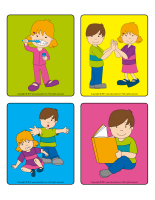
Have each child paint on a square piece of fabric. You can use fabric paint, but acrylic paint is more economical and it won't wash away in the laundry. Once the paint is dry, assemble the pieces to create a quilt. Children will enjoy sharing this blanket. If you wish, you can let a different child use it for naptime each day.
ACTIVITIES FOR LEARNING TO WAIT FOR YOUR TURN
Turn box
Deposit a picture of each child in your group in a special box. This box will be used to determine the order in which children shall complete a routine (toothbrushing, handwashing, etc.) or activity. Simply pick a picture out of the box to see who is next.
Fishing
(Open fishing game) Print. Use one fishing rod for the entire group. Children can take turns catching a fish with the fishing rod. Display pieces of construction paper corresponding to the fish colors on a wall. When a child catches a fish, have him hand it to another child who must stick the fish on the "aquarium" of the same color using adhesive putty.
Snakes & ladders
(Open snakes and ladders-Sharing) Print. Have three or four children play at the same time. Give each child a die and a playing piece. Have them take turns rolling their die and moving their playing piece towards the end of the board.
ACTIVITIES FOR LEARNING TO LISTEN TO OTHERS
Telephone game
Have children form a circle. The first child picks a word and whispers it in the ear of the child to his right who then whispers it in the ear of the child to his right and so on. The last child says the word out loud. Check if the word he heard is the same as the word spoken by the first child.
Guided coloring
Divide your group into pairs. Give each child a coloring page (the same one or not). Children guide their partner, giving him or her instructions as to which sections or items must be colored with which color.
Social skill guessing game
(Open word flashcards-Social skills) (Open giant word flashcards-Social skills) Print two word flashcard series. Arrange a series of word flashcards on the floor, in front of your group. Deposit the flashcards from the second series in a box. Have a child pick a card and invite him to describe what he sees. When he is done, the other children must identify the corresponding word flashcard/social skill.
Walking to the beat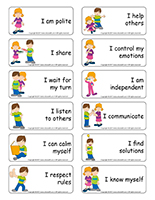
Use a drum. Invite children to walk to the beat of the drum. Children must run when the rhythm is fast and walk when the rhythm is slow.
Different sounds
For this activity, you will need three different instruments (drum, flute, xylophone, maracas, etc.). Present the instruments to your group before the game begins and associate each one to a specific action. For example, you can ask children to run to the sound of the first instrument, walk to the sound of the second instrument, and stop when they hear the third instrument. Let children take turns leading the game. This will make it possible for you to participate with your group and therefore help younger children follow along.
Guessing games
You will need a traditional bingo home. Every time you pick a card, be sure not to show it to your group. Instead, simply name the object. When playing bingo, children often look at the pictures without really paying attention to the words. Playing this way will force them to listen. If you wish, you can describe the items and let children identify them to make the game even more difficult. For example, if you pick a picture of an apple, you may say, "It's a fruit that grows in trees that is often red, but it can be green or yellow too."
Word series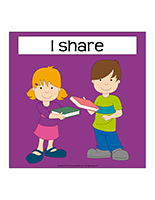
Say a series of words (start with two words and increase the number of words depending on the capacities of the children in your group) and have children repeat them in the same order. Ideally the words in each series should belong to the same category (clothing, animals, food, etc.).
Hidden pictures
For this activity, you will need pictures. Use two pictures to begin. Name the first picture without showing it to your group and set it upside down on a table. Add the second picture the same way. Children must name the hidden pictures in the correct order. If children can name two pictures in order, add a third picture, then a fourth picture and so on.
ACTIVITIES FOR LEARNING TO CALM YOURSELF
Massage balls
Provide several different balls (various sizes and textures). Guide children as they use the balls to massage themselves. Encourage them to roll the balls on their arms, back, head, legs, etc. You may also invite children to use the balls to massage a partner.
Guided breathing
Teach children breathing techniques they can use to calm down. Encourage them to sit comfortably and breathe in deeply for four seconds before breathing out for six seconds. Children will require your assistance for this exercise. They must hear you count.
Weighted stuffed animals
Weighted stuffed animals are beneficial to help children calm down. To use them, simply set them on their body when they are lying down. They can also be used in a seated position (on their legs) to help children remain seated. You can make your own weighted stuffed animals. Simply use stuffed animals you already have. Cut a slit in the back of each stuffed animal, insert a funnel, and pour bath salts in the opening. Use a needle and thread to sew them up.
Fetus coming to life
Have children lie on the floor, curled up in a ball with their legs against their chest and their arms wrapped around them. Slowly, guide children to have them stretch out each limb one by one...until their entire body is stretched out. This activity can be done at the end of naptime or whenever you feel your group needs to calm down. Repeat as often as necessary.
Light signal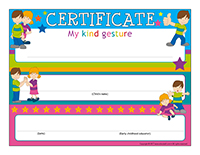
Turn the lights on and off in a rhythmic fashion. If your group is very active, this will represent a great way to invite them to gather around you. Have fun stopping children's activities throughout the day to encourage them to practice gathering as quickly as possible.
ACTIVITIES FOR LEARNING TO FOLLOW RULES
Social skills die
(Open social skills die) Print, laminate, and cut out the illustrations. Glue one illustration on each side of a cardboard box wrapped in pretty paper. Children take turns rolling the die on the floor. Have them mime the social skill displayed on the die so the other children can identify it.
Friendly caterpillar
(Open new friendly caterpillar) Print. Laminate the caterpillar and cut the various parts. Display the caterpillar on a large piece of paper or directly on the wall. The check marks can be used to motivate children during circle time. Ask children to stick them under the caterpillar to represent its legs as you discuss the corresponding social skills.
Verbal instruction game
Playing Simon says is a great way to help children learn to pay attention and respect verbal instructions. Use very simple instructions at first and slowly increase the level of difficulty. Act out your instructions if children are having trouble following along.
ACTIVITIES FOR LEARNING TO HELP OTHERS
Dress-up partners
When it's time to get dressed for outdoor play, help each child find a partner. Give each pair all the clothing items belonging to both children. Encourage them to help each other get dressed. For example, they can help their partner put his/her snow pants on. If possible, place an older child with a younger child.
Art duos
Divide your group into pairs. Give each pair of children a set of arts & crafts materials (paper, scissors, glue stick, accessories, etc.). Children work with their partner to create unique masterpieces. Display their work.
Rays of kindness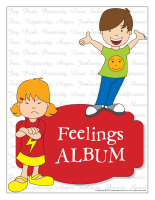
With your group, draw a large sun on yellow paper. Paint each child's hands with yellow poster paint and encourage them to make prints all the way around the sun to represent its rays. If you prefer, trace the outline of each child's hand on yellow construction paper and cut them out before gluing them around the circle. Every time you notice a child being kind to another child, let him/her add a sticker on your sun.
Kindness certificate
(Open certificates-kindness) Print a certificate for each child. Throughout the week, notice the times when children are particularly helpful or kind with their peers. At the end of the theme, give each child a certificate on which you have taken the time to write a kind action you greatly appreciated.
Counting cleanup
Have each child pick up five toys, then four toys, then three toys, and so on until the daycare is perfectly tidy. You won't believe how fast the toys will disappear!
Singing cleanup
Play a song children enjoy and tell them they must have put all the toys away before the end of the song.
ACTIVITIES FOR LEARNING TO CONTROL EMOTIONS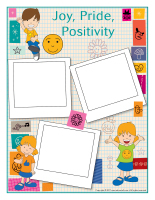
Emotion management chart
(Open chart-Emotion management) Print, cut out the parts where necessary, and display the chart in your daycare. With your group, identify the main emotions (anger, happiness, sadness). Name methods that can be used to make these emotions easier to manage. When children are angry, happy, or sad, encourage them to pick a method, add it to the chart, and apply it. Help them if necessary.
Posters-Emotions
You will need three large pieces of colourful paper. Write one of the following at the top of each: Happiness, Anger, Sadness. Provide several magazines and newspapers. Have children cut pictures of people demonstrating these emotions. Invite them to glue the pictures they find on the correct paper.
Emotional mimes
Have each child sit on the floor, facing a partner. They must mimic their partner's facial expressions.
Mirror game
Invite children to look at their reflection in a mirror as they use facial expressions to represent various emotions.
Emotional release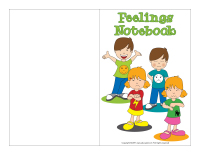
For the duration of this theme, hang a small punching bag within your daycare. You may also provide cushions and pillows that can be thrown or stacks of recycled paper that can be crumpled and tossed in your recycling bin.
Goodbye anger
Set up a special corner where children can go when they are angry. This corner can include modeling dough, a pillow, and calm music children can listen to with headphones.
Animal sounds
Making animal sounds can represent a great way to release anger. Encourage children to get down on their hands and feet and roar like a lion.
Emotions ball
Have children stand in a circle. Toss the ball to a child as you say a kind word. The child must say another kind word as he tosses the ball back to you. Continue tossing the ball around the circle for as long as possible.
Mr. Potato Head's feelings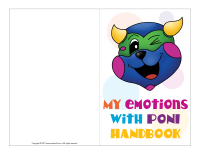
Invite children to create several Mr. Potato Head characters. Encourage them to present them to the group and describe their feelings.
Feelings album
(Open feelings album) Take pictures of the children in your group miming various feelings and emotions. Print the pictures and glue them in your album. Use the album to help children identify their feelings.
Feelings notebook
(Open feelings notebook) Print for each child. Throughout the week, encourage children to add to their notebook. They can invite their friends to draw in it, add pictures and illustrations, etc. At the end of the week, have children present their notebook to the group. Keep the notebooks handy and refer to them when necessary to help children understand their feelings.
Emotions box
Create a special emotions box. Have children decorate it and set it in a corner of your daycare. Throughout the theme, encourage children to open the box, speak into it, and then close the lid. This simple box may help children release their anger or excitement.
My emotions with Poni
(Open my emotions with Poni handbook) Print. Throughout the theme, ask children different questions about their emotions. For example, you may ask a child, "What happens when you get angry?" Make note of their responses. Have children use their facial expressions to represent the various emotions. Photograph them and print the pictures. Let children glue the pictures on the corresponding pages. This project requires a lot of time, but it really helps children understand their emotions.
ACTIVITIES FOR LEARNING TO BE INDEPENDENT
Challenge bags
Discuss with your group and together, determine several individual challenges or aspects each child needs to improve. Write each one on a small piece of cardstock. Place each child's challenges in a small bag (one bag per child). At the beginning of the week, have each child pick a challenge. If, at the end of the week, the child succeeded or improved, give him/her a plastic gem to add to his/her bag. Continue using the challenge bags until each child's bag contains only gems.
Responsibilities
(Open task chart) Print. Display the chart where children can see it. Every day, give each child a task. Be sure the tasks correspond to children's capacities. Positively reinforce children every time they tackle their task.
Wall hooks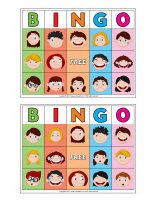
Hang several hooks on a wall, just over children's heads. Let them use the hooks to hang a variety of items: clothing, small fabric bags, scarves, etc. This is a great way to help children learn to hang their clothes in the cloakroom.
Getting dressed autonomously
This activity is perfect for older toddlers who are just beginning to dress themselves. You will need a collection of large stickers. Every time a child successfully puts a clothing item on, reward him/her by placing a sticker on the corresponding clothing item. In the end, children will have a sticker on their hat, a sticker on each boot, on their coat, etc. Supervision required.
Cleaning
Invite children to help you complete cleaning and cleanup tasks. This is a great way to help them develop their autonomy and at the same time, they will be glad to lend a hand. For babies and toddlers, cleaning is a game. Even the youngest children will enjoy "washing" their highchair tray with a moist towel.
Window washing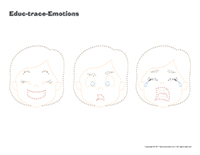
Let children draw or paint on windows with washable markers or paint. When they are done, provide spray bottles filled with water and let them wash the window!
Promoting autonomy and helpfulness
Sit on the floor with your group. Stretch out your arms and pretend you are unable to reach a certain toy or item. Ask children to help you reach it or hand it to you.
Little messengers
At a very young age, children discover that lending a hand is rewarding. Show them a picture of a person who works within your daycare, the cook for example. Ask them to deliver a message to this person. Accompany younger children.
ACTIVITIES FOR LEARNING TO COMMUNICATE
Talking stick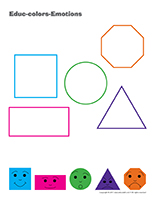
Create a talking stick with your group by painting and decorating a simple stick (branch or skewer for example). Use your talking stick during circle time. Explain to your group how it is their turn to speak when they are holding the talking stick.
What's missing?
Purposefully forget to provide certain items at lunch time (utensils, beverage, etc.) so children are forced to ask for them.
Round of questions
Prepare a small box containing a variety of questions (examples: What is your favorite animal? What is your favorite food?) During circle time, children take turns picking a question and answering it.
Go fish
(Open game-Go fish) Print twice and laminate. Use this game to help children practice asking questions. Have each child pick four cards. Arrange the remaining cards in a stack in the centre of the table. The goal is to assemble as many pairs of identical pictures as possible. When it's their turn, children pick a card they have in their hands and ask another child if he/she has a matching card. If he does, the child must hand the card to the player who asked for it. If not, the child must pick a card from the stack.
Picture book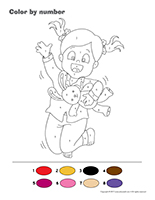
Photograph the children in your group as they perform different tasks independently. Print the pictures and use them to create an original picture book. Examples: a baby holding his bottle, a toddler washing his face with a facecloth, a child putting his coat on, etc.
I can communicate
Encourage children to communicate verbally and non-verbally to help them become more and more independent in terms of making requests. Let children choose between two things and give them the chance to ask for things with words or by pointing to them.
Examples:
- If, at snack time, you have apples and bananas. Show children both types of fruit and encourage them to choose.
- Use a bin filled with new animal figurines and ask a child if he wants to play with the sheep or the cow.
- During a coloring activity, take two crayons and let a child pick which color he wishes to use.
ACTIVITIES FOR LEARNING TO FIND SOLUTIONS
Problem solving rainbow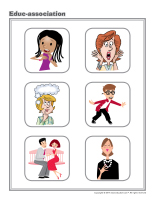
(Open problem solving rainbow) Print the tool. Use the rainbow whenever a conflict arises between two children. Follow the steps to help children find a win-win solution.
Finding solutions
Use puppets or dolls for a role play activity. Stage different conflictual situations. Print the illustrations representing possible solutions. (Open problem solving rainbow) Encourage children to determine which solution is best for each situation.
Solutions game
(Open game-Solutions) Print. Have children pick a picture. Together find the best solution for each problem (open a lock, slice an apple, fix the car, etc.). This activity is a great way to help children understand how, when they face a problem, there is always a solution.
ACTIVITIES TO HELP CHILDREN LEARN TO KNOW THEMSLEVES
Bingo-Emotions
(Open bingo-Emotions) Play bingo with your group. Print, laminate, and store the cards in a small box or Ziploc bag.
Educ-trace-Emotions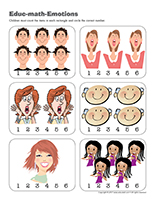
(Open educ-trace-Emotions) Print for each child. Children must trace the lines with a marker of the corresponding color and then color the item at the end of each line using the same color.
Educ-colors-Emotions
(Open educ-colors-Emotions) Print and laminate for durable, eco-friendly use. Children must associate each item to the correct color by drawing a line between the two with a marker of the corresponding color.
Color by number-Emotions
(Open color by number-Emotions) Print for each child. Children must complete the picture per the color code.
Educ-association-Emotions
(Open educ-association-Emotions) Print and arrange the pages in a file folder. Children must associate the cards to the items in the file folder and set them in the correct boxes using adhesive putty.
Educ-math-Emotions
(Open educ-math-Emotions) Print and laminate for durable, eco-friendly use. Children must count the items in each box and circle the correct number.
Educ-same and different-Emotions
(Open educ-same and different-Emotions) Print and laminate for durable, eco-friendly use. Children must circle the illustration that is different in each row.
Educ-pattern-Emotions
(Open educ-pattern-Emotions) Print and laminate. Children must determine the correct order and complete the patterns by placing the items in the squares using Velcro or adhesive putty.
DIFFERENT WAYS TO USE THE THEME'S COLORING PAGES
(Open coloring pages theme-Social skills) Print for each child.
Identical coloring pages-Social skills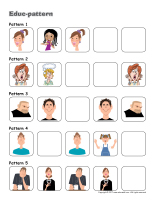
Print the same coloring page for each child and an additional copy for your model. Color only certain parts of your picture. Present the model to your group and ask them to color their picture to make it look exactly like yours.
Coloring binder-Social skills
Print and laminate several coloring pages and arrange them in a binder with a few dry-erase markers. Leave everything on a table for children to explore.
Musical drawing-Social skills
Play musical drawing with your group. Give each child a coloring page. Have children sit around a table. When the music starts, they must pass the coloring pages around the table. Every time the music stops, they must color the picture in front of them until the music starts again.
Homemade puzzles-Social skills
Give each child a picture to color. When they are done, cut each picture into pieces to create unique puzzles.
SONGS AND RHYMES
(Open songs & rhymes-Social skills)
Social skills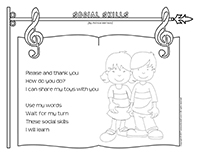
By: Patricia Morrison
Please and thank you
How do you do?
I can share my toys with you
Use my words
Wait for my turn
These social skills
I will learn
Have fun
The Educatall team
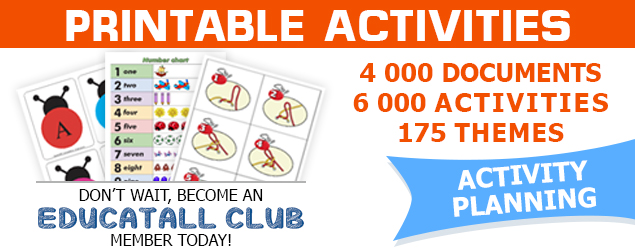
 Home
Home Theme activities
Theme activities
 Babies and toddlers
Babies and toddlers
 Arts and crafts
Arts and crafts
 Science
Science
 Creative recipes
Creative recipes
 Tips and tricks
Tips and tricks
 Special needs
Special needs
 Extra activities
Extra activities
 Educ-TV
Educ-TV
 Newsletter
Newsletter  Online store
Online store Educatall club
Educatall club

